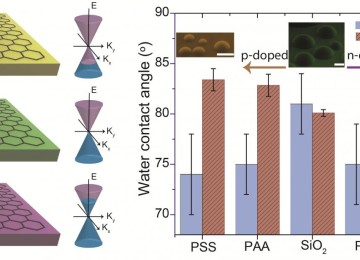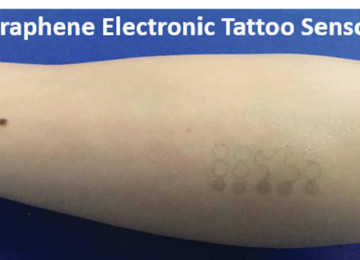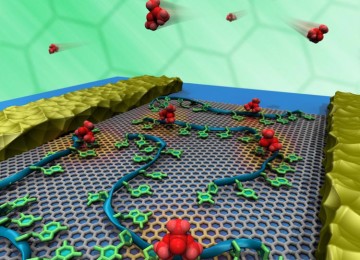Graphene memories with own inventors
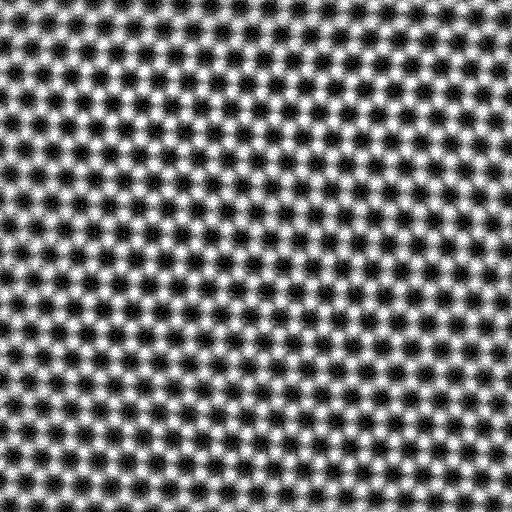
Graphene memories with own inventors
Graphene is essentially a single layer of carbon atoms, each of which is structurally-bound in the form of a honeycomb lattice a hallmark of graphene distinguishing it from other carbon allotropes (different forms of the same chemical element) such as diamond and graphite. Though this may not mean anything to you, its implications will.
The complex arrangement of carbon atoms in graphene means it is the world’s first two-dimensional material a million times thinner than paper, 200 times stronger than steel. It’s one of the most conductive materials we now know of, extremely light in weight and invisible to the naked eye.
It is properties like this which have caused scientists and innovators alike to speculate about graphene’s potential applications. It is impermeable to almost everything except water, which means places such as the Masdar desalination plant in Abu Dhabi can attempt to use graphene to make the process of turning salty seawater into clean drinking water “faster, cheaper and more energy efficient”.
Dotted around the exhibition are further imaginings of graphene-enabled technologies in the future: “batteries that last a lifetime”, “healthy clothes”, “personal flying backpacks”. When graphene’s properties are being looked at to improve the way we store energy, monitor our health and revolutionize flight, it is, as exhibition co-curator Danielle Olsen tells me, “under a lot of pressure to perform”.
For a material promising so much, it may come as a surprise to find out just how accidentally it was discovered. In 2004, Russian scientists Andre Geim and Kostya Novoselov were playing around with some sticky tape during one of their now infamous “Friday night experiments” in Manchester. They used the tape to isolate thin flakes of graphite, which they then continuously separated into layers which were just one atom thick. Graphene had been discovered and the pair went on to win the Nobel Prize in Physics in 2010.
For Geim, it was the spontaneity found in playful research which excited him and ultimately led to the discovery. From the beginning of his career, he was keen to resist against being pigeonholed into extremely niche areas of research– something which often happens to scientists. “In the case of graphene, I certainly checked it but I never used the words graphite or carbon in any of my previous hundred papers . . . it was completely out of my area of expertise,” he tells me.
It’s been 12 years since graphene’s discovery and Geim is acutely aware that public curiosity around the material is boiling over. When asked what he would like visitors to understand about graphene from this exhibition, he said: “I think graphene has already perpetuated into public perception a little bit. It was in front of our eyes and under our noses for 500 years. One of the powerful messages of this story is that it shows how little we know about the world around us. The only thing that we still remain to find out is how much impact it will have.”
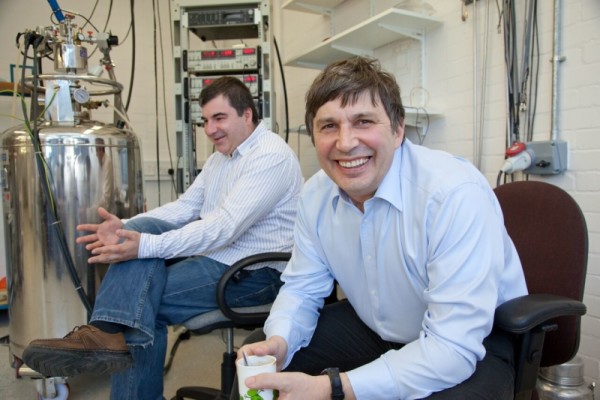
Andre (right) and Kostya (left) in their laboratory at the University of Manchester 2010
Geim stressed that the most remarkable thing about graphene is not quite the material itself but what can come from it; the material is “shorthand for all kinds of materials which are one atom or one molecule thick.” The discovery of graphene is creating a whole new field of two-dimensional materials, with boron nitride aka “white graphene” already being used, as well as two-dimensional tin and silicon.
Part of the challenge for the curators was making the invisible, visible. “It’s all about potential. It’s a really rich field for the imagination,” said Olsen. Graphene may not be at hand to gaze upon, but the exhibition capitalizes on its invisibility by marrying science and art together to give graphene its full glitter.
The exhibition is a part history lesson, part time capsule. It starts visitors off with a primer on the history of graphite and shuttles them forward to a near future in which graphite’s derivative graphene is represented through the stories of various scientists currently working on it. The former is captured in a room peppered with ornaments to show just how close graphene has been to us this entire time: model cannonballs and paintings of mines demonstrate where graphite has come from and how it has been used, while an inconspicuously placed sticky tape roll gains far more attention than it would at a stationary store.
The latter section feels like a sterile, white laboratory. The walls are punched with squares of light which frame a number of images associated with current graphene research; images from the National Graphene Institute in Manchester and graphite mines in Sri Lanka are just some put together to highlight how work on graphene has prospered as a result of international collaboration.











